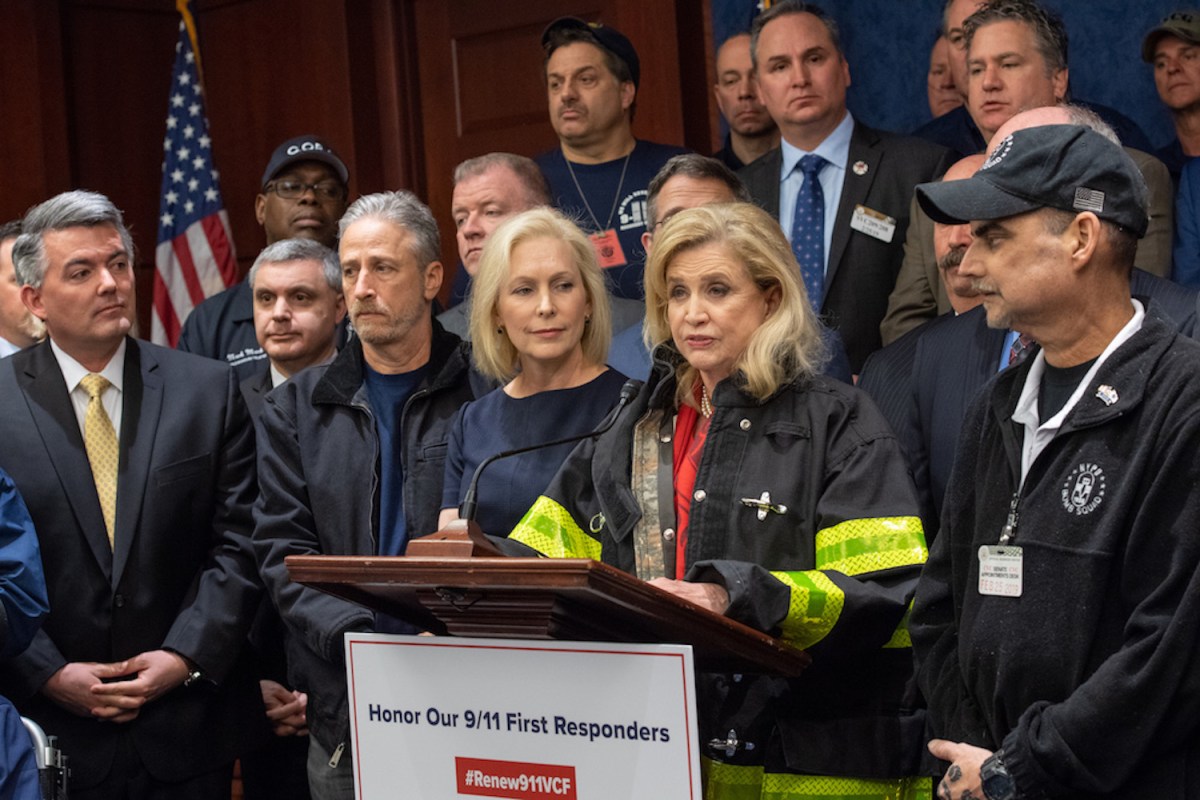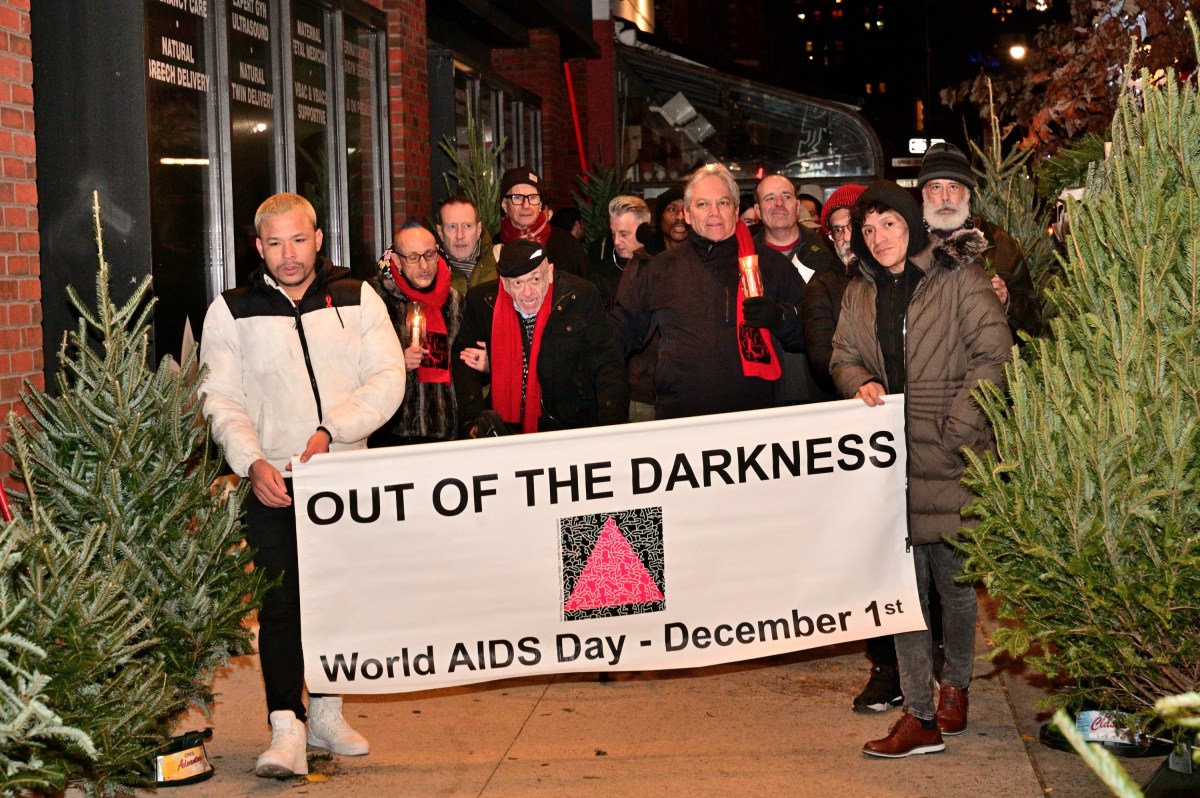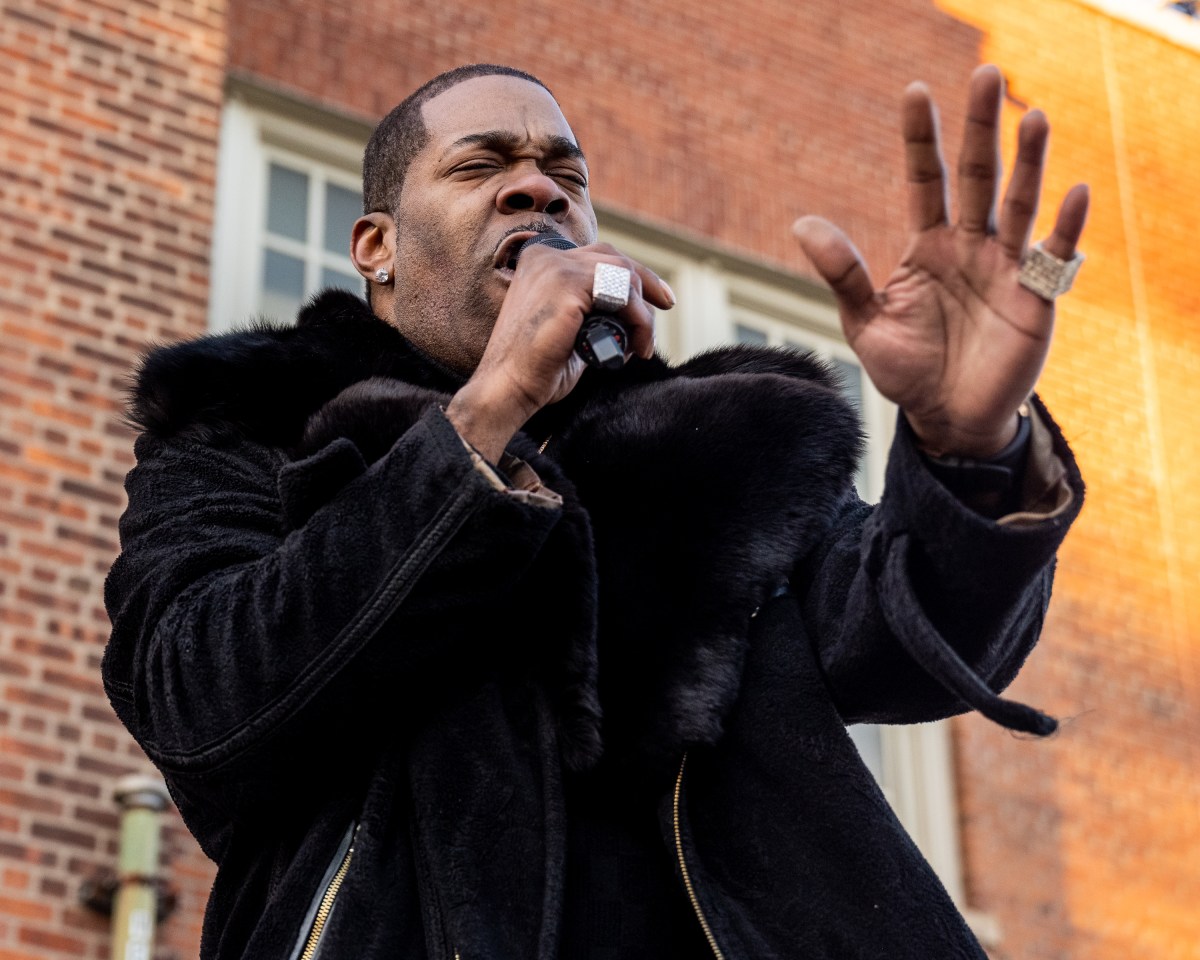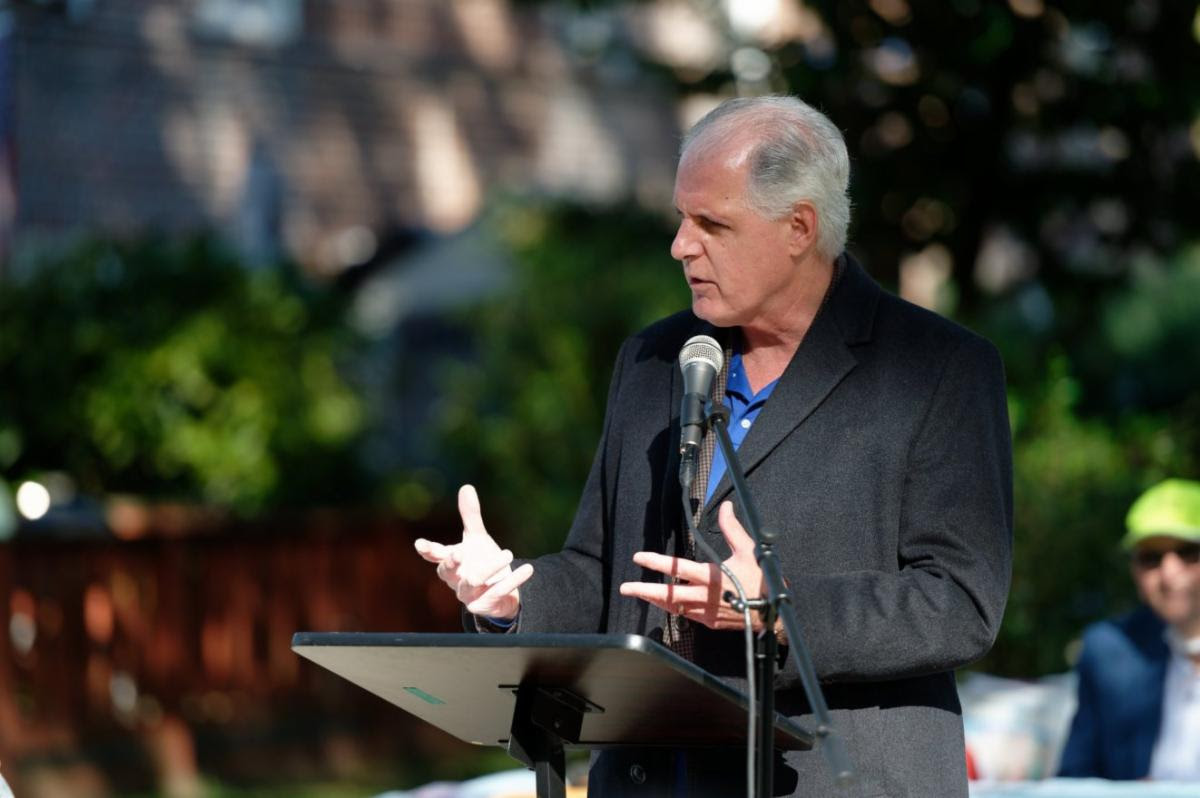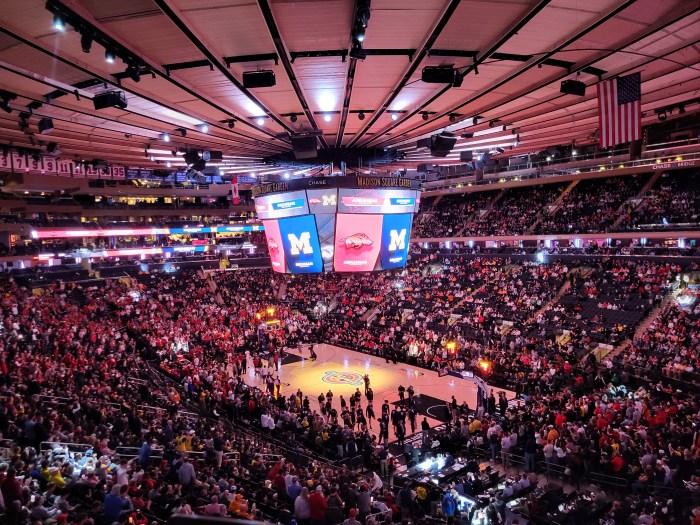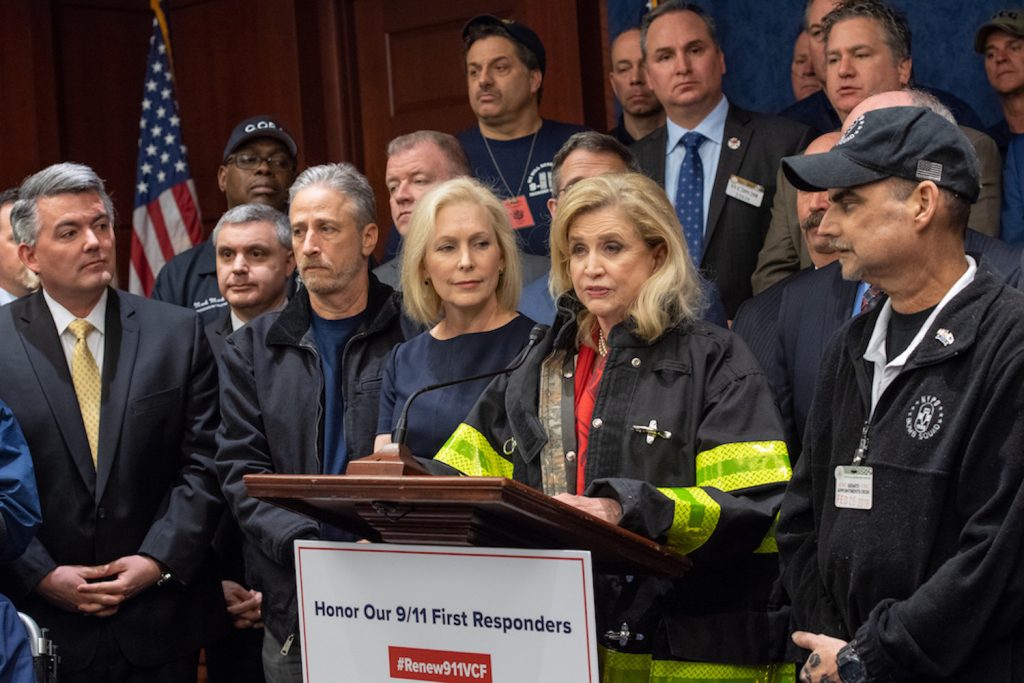
BY GABE HERMAN | Responding to alarm that the 9/11 Victim Compensation Fund will slash claim awards in the face of dwindling funds, a bipartisan group of lawmakers announced a bill to fully fund the program and extend it permanently.
The legislators were joined by first responders, survivors, their families and longtime advocate Jon Stewart to announce the legislation on Feb. 25.
The bill’s name is Never Forget the Heroes: Permanent Authorization of the September 11th Victim Compensation Fund Act.
On Feb. 15, the special master of the 9/11 Victim Compensation Fund said it would cut claim awards by up to 70 percent, because of a lack of funds and a rise in 9/11-related illnesses and deaths.
According to Rupa Bhattacharyya, the V.C.F. special master, $5 billion of the fund’s $7.3 billion has already been spent, and the number of claims is rising as more people get sick and die from the toxic air that existed around Ground Zero. As a result, he said current claim awards would have to be cut by 50 percent, and claims from now on cut by 70 percent. The fund is set to expire in December 2020.
About 40,000 people have applied to the fund, which started in 2011. Around 19,000 claims are pending.
Michael Barasch, a lawyer who represents thousands who have filed claims with the fund, said he expected cuts, but was surprised at the severity. He noted a sharp increase in claims filed last year.
“These are all legitimate claims — you’re seeing an explosion of cancers and death cases,” he said. “Nobody predicted this and that’s why Congress didn’t set aside enough money.”
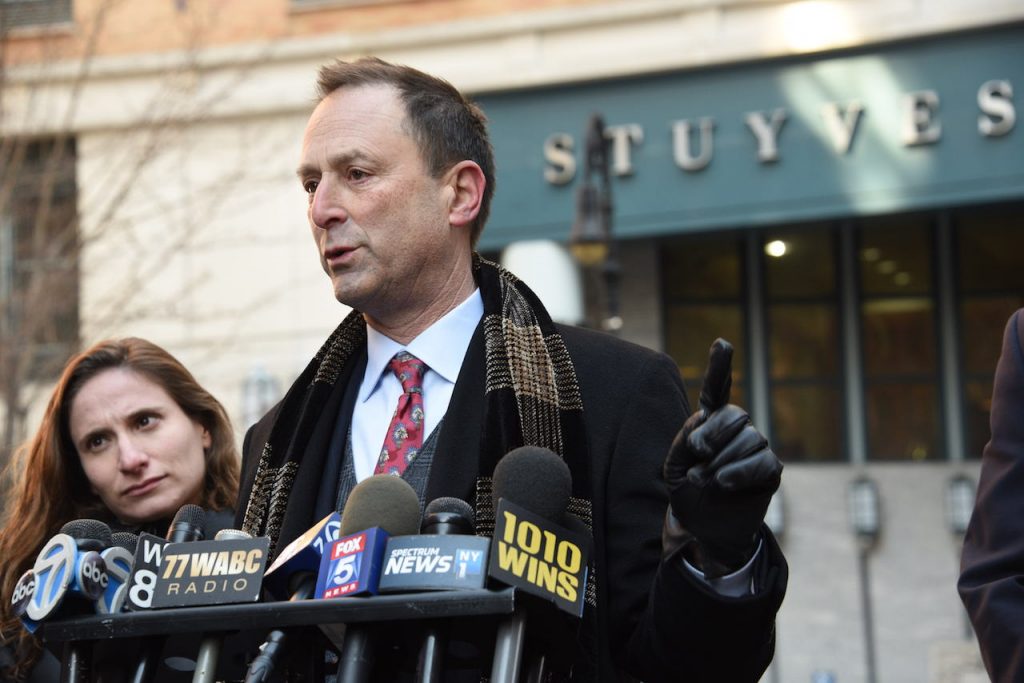
He said more people also are only now realizing their health problems are linked to 9/11. They may not have made the connection earlier because the Environmental Protection Agency said the air was safe at the time and it’s now years later, with many living in other parts of the country.
“In addition, you’re also seeing a lot more people die now. Frankly, not a day goes by without one of my clients dying,” Barasch said. “It’s horrific.”
He expected the V.C.F. awards cost could now be up to $10 billion.
“I know that’s not easy to get, but it’s a moral imperative,” he said. “It’s the right thing to do for these people, whose only thing they did wrong was believe the E.P.A. when they said the air was safe.”
At the Feb. 25 press conference, Congressmember Jerrold Nadler called passing the bill “imperative.”
“We designed the Victim Compensation Fund to ensure that the tens of thousands of responders and survivors battling 9/11-related illnesses, and those who may not yet know they are sick, have the resources they need,” he said. “It is imperative that we pass this bill as quickly as possible to make the V.C.F. permanent.”
Jon Stewart said there’s an obligation to “do the right thing.”
“We have a grand opportunity to finally do the right thing and allow those who always answered the call for us to know that we have their backs,” he said.
Lila Nordstrom was a student at Stuyvesant High School on 9/11 and has suffered from respiratory and related acid reflux problems ever since. She only filed a claim with the Victim Compensation Fund last year — adding there was misunderstanding among many survivors about who could file.
“That information really didn’t get to us very effectively until only recently,” said Nordstrom, 35, who runs Stuy Health, which advocates for young people in the 9/11 survivor community.
Young people, she said, have to worry about dealing with long-term illness but not knowing if funds will be there for them.
“It sort of puts this cloud over your life,” she said.
Stuyvesant students returned to the school building on Oct. 9, 2001. After such an unprecedented tragedy, people didn’t know how to clean up properly, and the school’s air ducts weren’t cleaned and a heavily used theater with carpeting was contaminated, Nordstrom said.
She said when “Stuy” students returned to school just a month after 9/11, they felt like they were part of a statement being made about the city getting back to normal — rather than their health being prioritized. It felt like part of a political game.
“It feels like that again,” she said.



